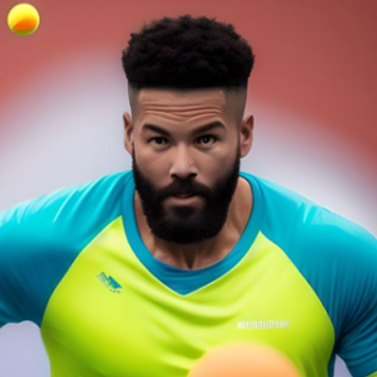Which Pickleball Skills or Techniques Take the Longest to Master and Why?
Mastering The Dink Shot
Mastering the dink shot was my biggest challenge. It took months of practice to refine my touch and control, aiming for precise placement over power. Achieving a consistent, low, and soft dink required patience, honing my finesse game, and countless hours on the court.
Mastering The Kitchen Area
Mastering the kitchen area in pickleball presented a formidable challenge, particularly for someone like me with a background in badminton. The switch entailed a complete recalibration of reflexes and positioning, as I was accustomed to a different court dynamic.
The close-quarters nature of the kitchen demanded an exceptional level of precision in shot execution, a skill that required diligent refinement.
Knowing precisely when to advance towards the net and when to hold ground emerged as a pivotal factor. It became evident that success hinged not solely on power, but on finesse and calculated strategy.
Through unwavering practice and the invaluable guidance of mentors, I eventually gained mastery over the pace and angle of my shots, enabling me to assert dominance in the kitchen area with confidence. This journey underscored the paramount importance of adaptability in the realm of sports.
Stephen Watts
Not Hitting Balls Out, Patience When Dinking, And Sticking To A Game Plan
I think the most difficult skills to master are mental, not physical skills.
1. Not hitting out balls, when at the kitchen line, is a skill that I continue to struggle with and is perhaps the thing holding me back the most from moving to the next level. I know to let the balls fly, but in the split second I’ve got to make a decision I can’t stop myself from wanting to hit the ball!
2. Patience when dinking. It’s not the physical technique of dinking that is a struggle, it’s forcing myself to outlast my opponent in a slow methodical battle waiting for the right opportunity to attack. Speeding the ball up too early is a recipe for disaster!
3. Sticking to a game plan, especially for 3rd shot choices. Halfway through a match, I’ll find myself forgetting that to beat my tough opponents I *must* stick with a drop shot for most 3rd shots. Some people can win with predominantly 3rd shot drives, and good for them – but for my game I need to remember to mostly drop the ball even when there is a juicy opportunity for what I mistakenly believe could be a put-away winner on the 3rd shot.
Good Drop Shot
I think one of the skills that is the most difficult to master is a good drop shot. It is a shot that you use almost as much as any other shot, but yet can be difficult to be consistent at it, especially when you are backed up. Unlike a Dink where for the most part the distance you are away from the net is very similar each hit, the drop shot you will be hitting from lots of different places on the court. Lots of finesse and a soft touch [is] needed on that shot!
Colby Stoker
Charlott Nagai
Resetting The Ball, Top Spin, And The ATP
Resetting the Ball
Resetting the ball, especially when it’s being driven hard, took a lot of drilling sessions to master. It’s tough developing the muscle memory to block a ball back into the kitchen, taking the pace off, instead of entering into a faster paced drive vs drive battle.
Top Spin
Top spin was another tough shot for me to develop, not coming from a tennis (or any sport) background. When trying to learn to put top spin onto shots, it’s easy to put too much pace/follow through and cause pop-ups, especially when not from the baseline.
The ATP
The ATP will test your patience! We tend to not realize how much time we really have to hit the ball, and you can’t hit an effective ATP unless you wait until the ball is wide enough and has reached its apex and then dropped very low to the ground. Nowadays the ATP is more common, and at the higher levels they’re quite frequent so defending them gets easier.


